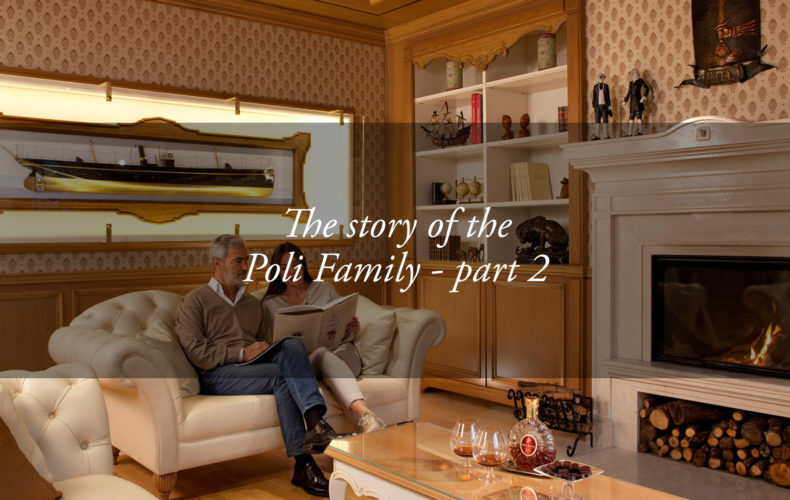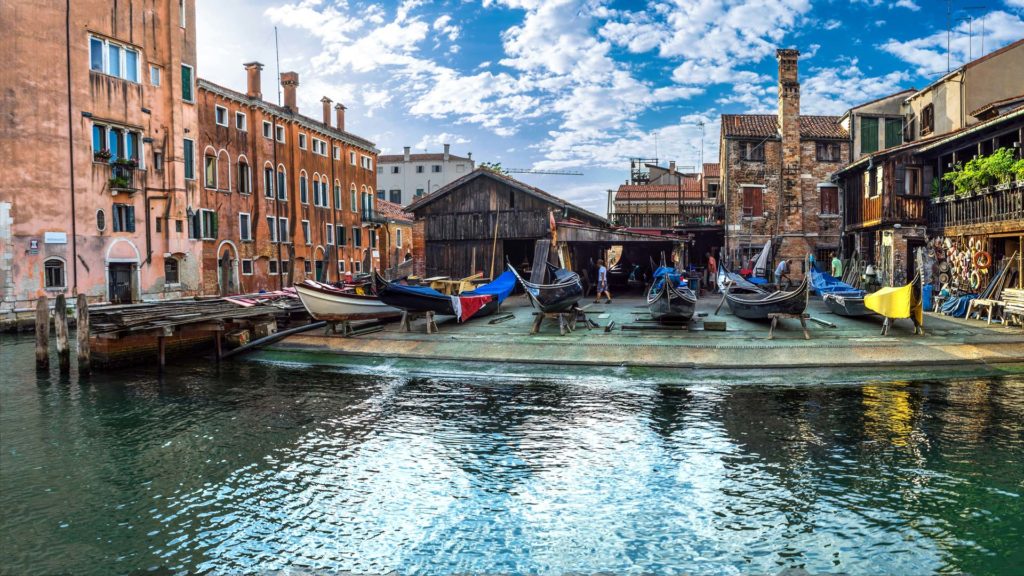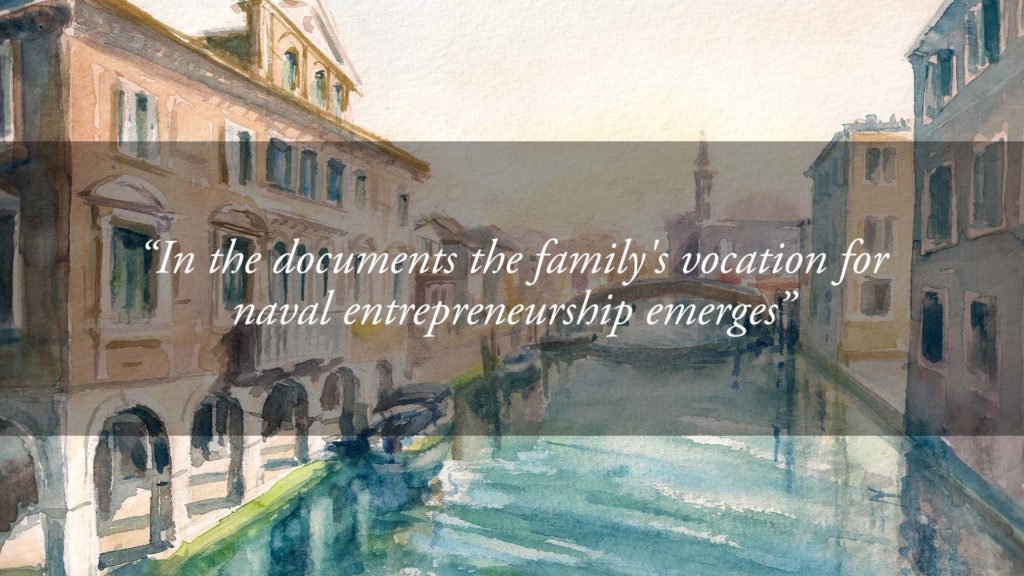
The History of the Poli Family, owners of the Hotel Tritone di Abano – second part
In the first part of the history of the Poli Family we have seen how a thousand-year-old historical document was found in which a member of the family was named for the first time, whose genealogy can be traced back to the current owner and General Manager of the Hotel Tritone, Dr Walter Poli.
The early days among the main notables of the town of Chioggia; their entrepreneurial beginnings in the extraction by evaporation and sale of salt; shipbuilding; political involvement; participation in the Chioggia War; admission to the Venetian nobility and the beginning of Adriatic trade in the 15th century: these were all fundamental steps taken by the family by the end of the Middle Ages and on the threshold of a new era, which saw the flourishing position of the Poli in the shipbuilding market.
*This history has been collected and documented in the volume “I Paulus – Polo – Poli” by the scholar Sergio Piva, published in 2012 by Nuova Scintilla and available at the Hotel Boutique.
THE SIXTEENTH CENTURY AND THE MARZILIANA
In the first half of the 16th century, historical documents from Chioggia show the presence of two shipyards – called “squeri” – owned by Giovanni Maria Poli and Giovanni Poli respectively. The first of these yards would remain the property of the Poli until the early 1800s. Both yards were located in the same area of the town, the district of the Pauli, as they were called at the time.

Two main branches of the Poli family, the Menèi (that is, Domenico Poli’s branch) and the Zanèti (Giovanni’s), seem to have been consolidated by the middle of the 16th century. There was also a secondary branch, called the Zacinti (of Giacinto).
In 1558 the Poli were hired by Matteo da Istria to build a Marciliana or Marziliana, a popular two-masted flat-bottomed vessel for maritime trade. There is a very detailed document of great historical value about this yard.
THE SEVENTEENTH CENTURY AND THE POLI’S SHIPYARDS.
Dating from 1603, on the other hand, is a second document that records the commercial negotiation by the shipwright Battista Poli for the construction of a three-masted brigantine in the service of Cardinal d’Este, followed by other copies of the same model, worth 330 ducats per ship.
In the documents mentioned above the family’s vocation for naval entrepreneurship emerges, and over the next two centuries, they acquired “squeri” and shipyards not only in Chioggia but also in Capodistria (modern-day Koper, in Slovenia). Already in the Shipbuilding Census of 1688, there were 20 shipyards in Chioggia, four of which were owned by the Poli family. One of the owners was Antonio Poli, whose descendants can be traced directly and seamlessly down to Dr Walter Poli.

THE TIMBER PROBLEM
In the Republic of Venice, the demand for timber was very great and the shipbuilding industry absorbed a huge quantity. The raw material for ships came from Teolo and the Euganean Hills, from Camposampiero, Camisano and Schio, from Friuli, Austria and the Istrian coast. Cutting was regulated by a legal statute or rulebook (mariegola) kept in the Arsenal of Venice, and the activity was strictly supervised to avoid the depletion of the woods and forests.
The Chioggia shipyards were not in compliance with this rule, so much so that there is documented an official inspection in 1719 by Commandator Gastaldello, who discovered in some shipyards the presence of unauthorised cutting tools and wooden boards. These events cost Maestro Pietro Poli the considerable fine of 10 ducats.
BETWEEN THE EIGHTEENTH AND NINETEENTH CENTURIES: THE FALL OF VENICE
Despite the slow decline of trade in the Adriatic, due to the opening of the new transatlantic routes, overall the eighteenth century was a period of stability and prosperity for the Republic of Venice. At the end of the century, the Republic’s fleet of ships was well stocked and withstood the impact of American trade thanks to the continuing vitality of trade with the East. In 1780 Chioggia had 20,000 inhabitants and flourishing craft and commercial activity. In a list of 1784, out of a total of 211 shipwrights (calafati), 49 were part of the Poli family, which was decidedly prosperous and expanding.
With Napoleon’s troops at the gates, on 15 May 1797, the Doge and the Great Council of Venice decided to surrender to the enemy and leave the Doge’s Palace forever, while the government passed to a temporary Municipality under the control of the French military command. In this context, there was a migration, begun years before for economic reasons, of master shipwrights from Chioggia to the richest Adriatic destinations, such as Trieste and Fiume. In these cities, the cost of living, work opportunities and the space to open new shipyards provided favourable conditions for commercial development, by then stagnant in Chioggia.
In 1840 appeared the first official document that places Francesco Poli (born and raised in Chioggia) and his son Luigi in the economic and productive world of Istria, with one of their shipyards that, in the second half of the century, would build bigger and stronger ships, as we will see in the next part of this history.
To get to know the Poli Family and its activities at the Hotel Tritone, you can write to us here or call (+39) 049 8668099
